Auction Results Video,

HAN GAN (706-783) AS CATALOGUED IN SHIQU BAOJI Horse Handscroll, ink and color on silk 12 Ω x 15 ¿ in. (31.9 x 38.4 cm.)
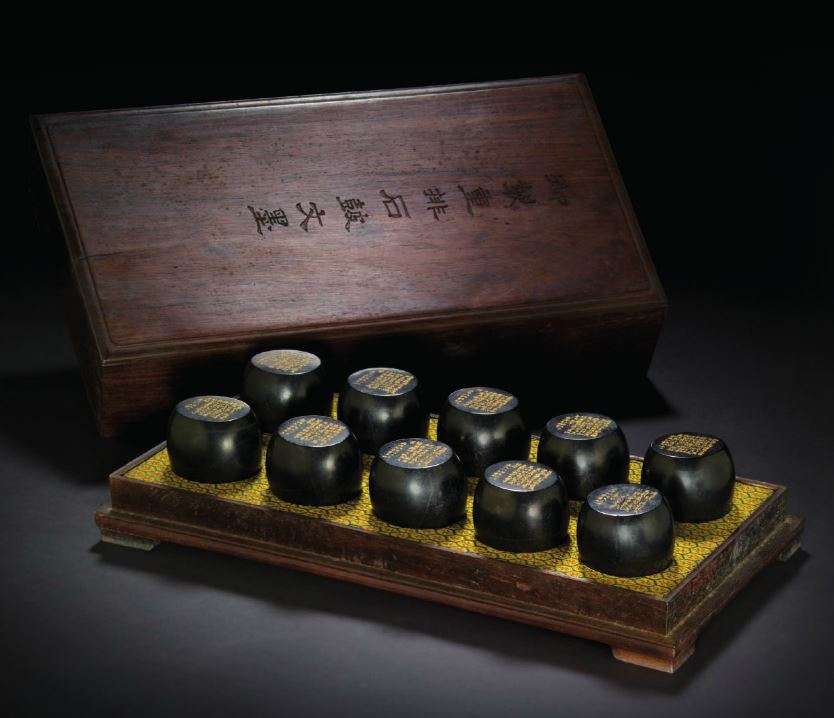
A SET OF TEN IMPERIAL ‘STONE DRUM SCRIPT’ INK CAKES WITH FITTED BOX AND COVER QIANLONG PERIOD (1736-1795)
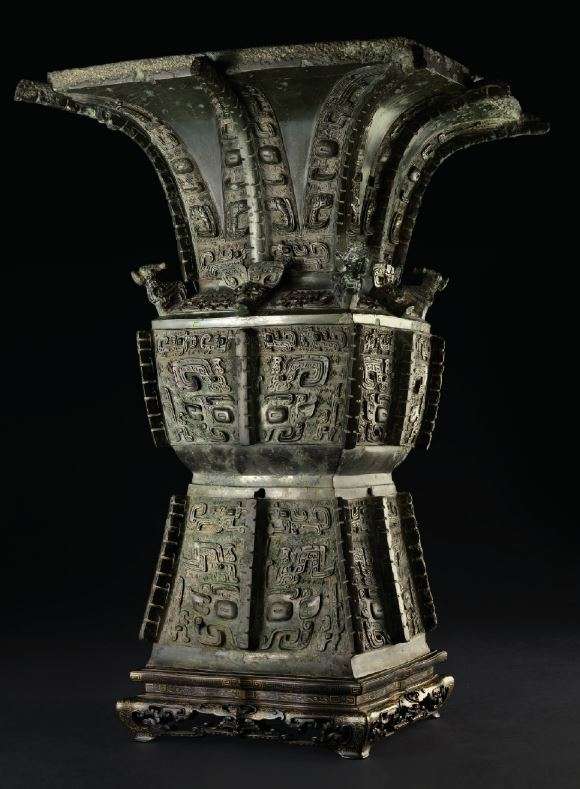
A MAGNIFICENT AND HIGHLY IMPORTANT BRONZE RITUAL WINE VESSEL, FANGZUN LATE SHANG DYNASTY, ANYANG, 13TH-11TH CENTURY BC
A MAGNIFICENT AND HIGHLY IMPORTANT BRONZE RITUAL WINE VESSEL AND COVER, FANGLEI LATE SHANG DYNASTY, ANYANG, 13TH-11TH CENTURY BC
Ar Asia Week, New York City March 2017
The Fujita Museum Auction, Asia Week 2017
Exceptionally rare Chinese celadons from the Yuan and ming dynasty, fabulous paintings and some of the finest Shang bronzes ever collected.
An Amazing collection.
FUJITA DENZABURO ¯
COLLECTORAn except from the catalogue
Fujita Denzaburō (1841–1912) represented the new breed of industrialist collectors in Japan
who emerged in the late nineteenth century. Like his powerful contemporary Masuda Takashi
(1848–1938), the frst director of the Mitsui Trading Company and an early business associate, he was
grounded in traditional Japanese culture and focused on Sino-Japanese arts. As a collector, Fujita was
rough, proud, competitive. He seized every opportunity.Fujita was born in Hagi in Chōshu province (modern Yamaguchi Prefecture), the son of a merchant
family operating a soy sauce brewing business and sake brewery, among other ventures. In 1869, a
year after the Meiji Restoration, he moved to Osaka—noted as a center for wealthy merchants since at
least the seventeenth century—to make his fortune. At the age of about thirty, he had his frst success
selling military footwear to Chōshu warriors who were charged with forming the new army for the
Meiji government. Then, during the Satsuma Rebellion in 1877, working with Yamada Akiyoshi, a
fellow nationalist from Hagi, Fujita made huge profts as a purveyor of military uniforms. That revolt of
disafected samurai from the Kyushu domain of Satsuma was the last in a series of armed uprisings
against the new imperial government.The Japanese people united behind the government’s all-out eforts to catch up with the advanced
nations of the Western world. Fujita branched into business enterprises that helped modernize Japan
at this critical juncture in its history. He had a construction business in Okayama; operated the Kosaka
mine in Akita; and helped establish a newspaper, textile mill, electric power plant and railroad in
the Kansai area. From 1885 to 1889, he was a founding member and the second head of the Osaka
Chamber of Commerce (Osaka Shoko Kaigisho). A distinguished leader of his community, he was also
the frst civilian to be awarded the title of baron (danshaku).In 1909, on his spacious estate in scenic Amijima, Fujita began building three modern, Japanese-style
houses for himself and his two sons, Heitarō—his successor—and Tokujirō. Situated alongside the
Yodo River, in the heart of Osaka City, Fujita’s residence served as headquarters for his business and
political activities. His home was equipped with a Noh stage (he trained in the Kanze School of Noh),
billiard room and some tearooms. Most of the buildings on the property were destroyed during the fre
bombing of Osaka in 1945. Only a seventeenth-century wood pagoda and—miraculously—the three
large storehouses with his art collection survived. The collection is housed today in a small museum
on the Fujita property that opened to the public in 1954. The garden is dotted with an artifcial
miniature hill, waterfall, gorge and pond, as well as some ffty cornerstones of ancient Nara-period
temples and some stone pagodas and lanterns of the Kamakura period.For the elite new collector (the new daimyo, as Christine Guth calls such men), Chinese tea wares
were highly sought after. The Fujita family, for example, paid ¥200,000 for a globular Chinese tea
caddy once owned by the seventeenth-century calligrapher Shōkadō Shōjō, a gigantic increase over
the ¥2,000 it brought when the Sakai family bought it in 1871. (For the purpose of comparison, in
the 1870s, the monthly salary of high government oficials averaged between ¥350 and ¥500. (See
Christine M. E. Guth, Art, Tea and Industry: Masuda Takashi and the Mitsui Circle [Princeton University
Press, 1993], p. 134.) A master of the tea ceremony, Takahashi Sōan (1861–1937), observed that
Fujita would never ask the price of an object he was ofered. Dealers arrived daily with their wares
and spread them out in front of their client, “from whose mouth only two responses emerged: ‘I will
take it’ or ‘ I don’t need it.’ (For more about Sōan and Fujita, see Kumakura Isao, “Chigusa from the
17th Century to 1929,” in Louise Allison Cort and Andrew M. Watsky, eds., Chigusa and the Art of Tea
[Freer|Sackler, 2014], p. 184.)In 1912, desperately ill, Fujita bid from his hospital bed on a tiny, Ming-dynasty ceramic incense
container, a fne example of Kochi ware, yellow with brown and green markings. It had passed through
the hands of the Inaba family in Yodo and the Ikushima family in Kobe. Fujita had his loyal agent Toda
Rochō (Yashichi, 1867–1930) bidding for him at this dealers’ auction. The frst bid was ¥73,000. Fujita
countered by immediately jumping to ¥90,000—the winning bid. Ten days later, he died. Ironically,
the incense container is in the auspicious shape of a tortoise, symbol of longevity (see Maeno
Eri, “ ‘Korekutaa—Fujita Densaburō no shimbigan’ ni yosete” [On the subject of ‘Collector: Fujita
Densaburō’s aesthetic sense’] Tosetsu 704 [Nov. 2011], pp. 23–24).
Fujita spent a fortune on tea utensils, had several rooms designed for the tea ceremony and diligently
studied tea, frst with Mushakojisenke and then with Omotesenke teachers. However, the chanoyu
historian Kumakura Isao discovered that Fujita was not a typical man of tea. Surprisingly, he rarely
hosted tea gatherings at his home, claiming that he had not yet assembled the full range of utensils
necessary for a tea event. Perhaps he felt himself to be inadequate as a practitioner.In Japan, it is customary for collectors to work through only one, sometimes two, dealers, who have
exclusive access to them. Fujita Denzaburō worked with two fabled local dealerships. Until World
War II, the Fujita family acquired Chinese art exclusively through Yamanaka & Company and relied
on Tanimatsuya, or Toda Gallery, for Japanese art and tea wares. Both of these dealerships had their
headquarters in Osaka.Tanimatsuya was founded around 1700, and the Toda family was soon appointed the oficial tea
utensil store (Goyo dogusho) to Matudaira Fumai (1751–1818), the head of the Matsue clan and a
renowned man of tea. Rogin (b. 1843), the eighth head of the Toda family, saw the collapse of the
tea market in the fnal years of the Tokugawa regime, when daimyo patronage ended, but he soon
rejuvenated the business. He adopted Rochō in 1879 from the Toda branch family in Kyoto and trained
him as the ninth head of Tanimatsuya. Together, they developed their business through the period
of Japan’s modernization, from Meiji into the early Shōwa era, working hard to build the great Fujita
family collection on a scale that would be unthinkable today.
The original collection formed by Fujita Denzaburō numbered over seven thousand items (some
say ten thousand), recorded in twenty-fve volumes of what was originally a much larger number
of inventory books dating from 1904, the Kōsetsusai zohin mokuroku (Inventory of the collection of
Kōsetsu; Kōsetsu was one of the collector’s go, or art names). The remaining volumes of the inventory
were lost. In 1929, in the wake of a worldwide depression that hastened the dispersal of many old
collections in Japan, and after the Fujita-owned bank had failed, the family deaccessioned four
hundred important works at a dealers’ auction on the Fujita property. The sale, including two days of
previews, was supported by a long list of eminent art dealers, represented frst and foremost by the
biggest players in Osaka, Yamanaka & Company, as well as Toda Rochō.At that 1929 sale, the Fujita family parted with the Chinese tea-leaf storage jar known as Chigusa
for ¥2,000. In 2009, the Freer Gallery of Art in Washington, DC purchased Chigusa at auction at
Christie’s, New York, for $662,500, well above the estimate. (Fujita had purchased the jar in 1888 from
a Kyoto chanoyu family, the Hisada, who treasured it for 250 years.) There were three additional Fujita
auctions; altogether, the family sold some 860 pieces between 1929 and 1937.Today, the collection formed by Fujita Denzaburō and his sons still numbers five thousand works of
Asian art, including masterpieces of Japanese art, as well as Chinese painting, bronzes, sculpture,
ceramics (most famously, a stunning Chinese tenmoku tea bowl with oil-spot glaze that is now a
designated National Treasure) and decorative arts such as lacquer, jade and textiles. There are nine
National Treasures and ffty-one Important Cultural Properties. The 1972 publication Masterpieces of
the Fujita Museum of Art singles out nearly four hundred of the most important pieces from the Fujita
Collection, including some of the Chinese works of art that are here ofered for sale by Christie’s.







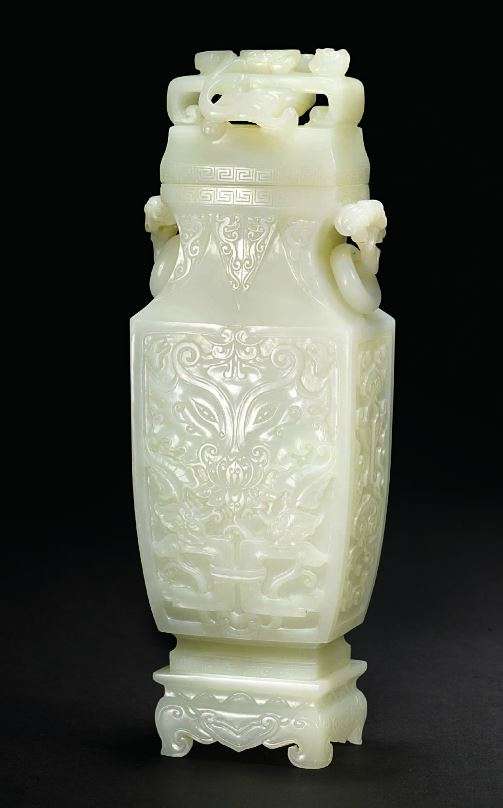
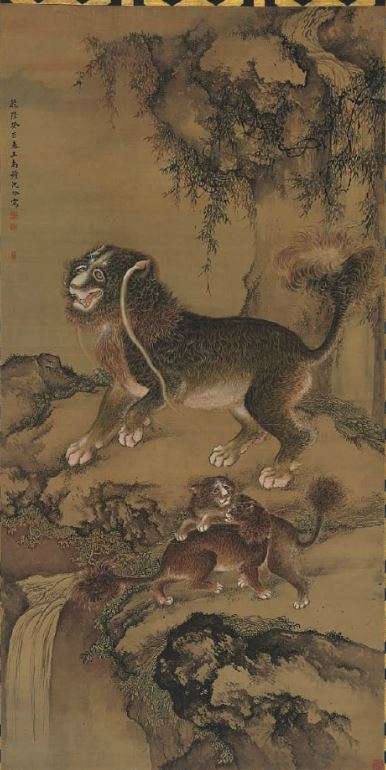
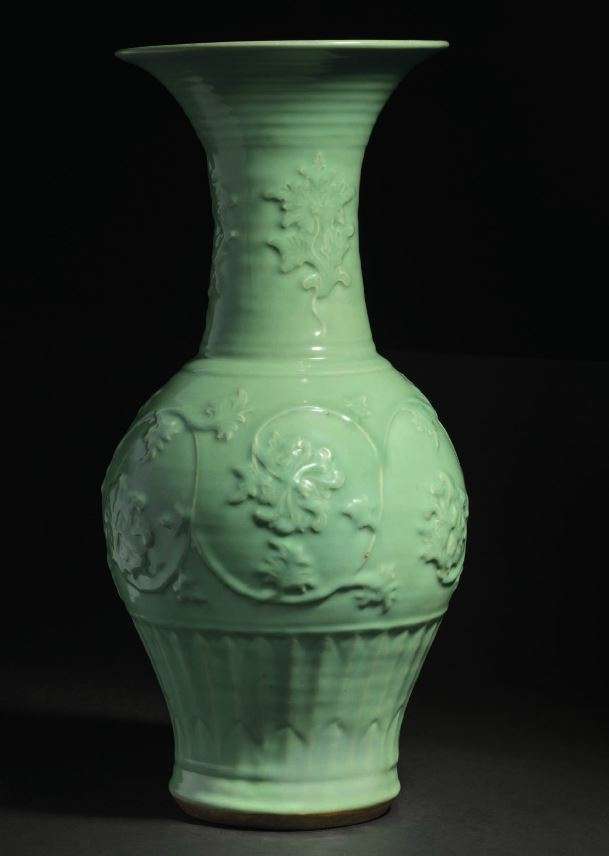
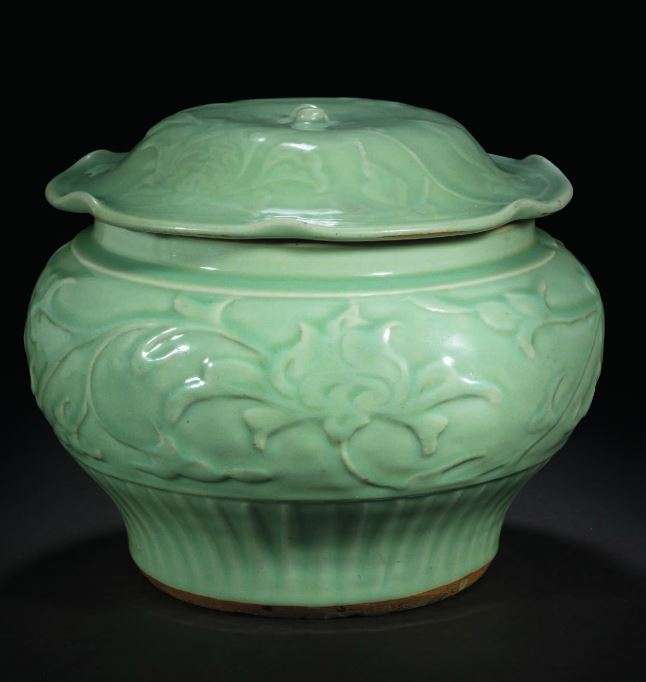
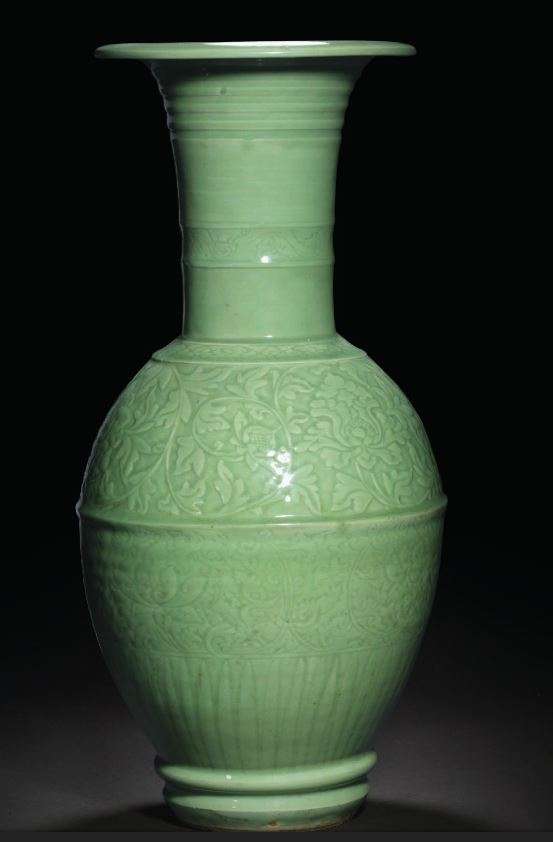
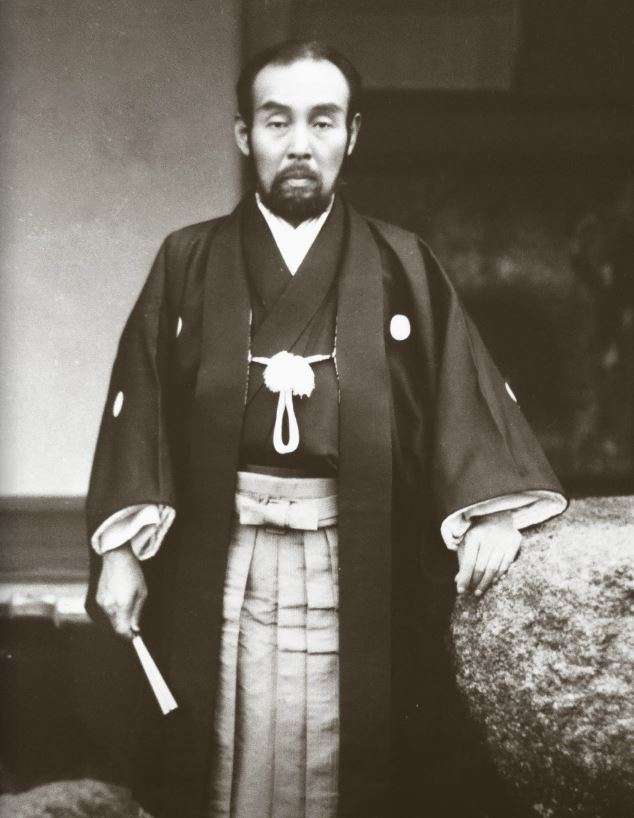
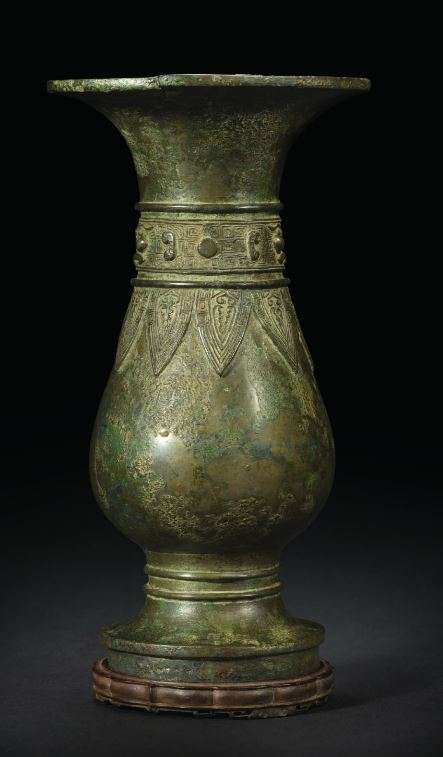
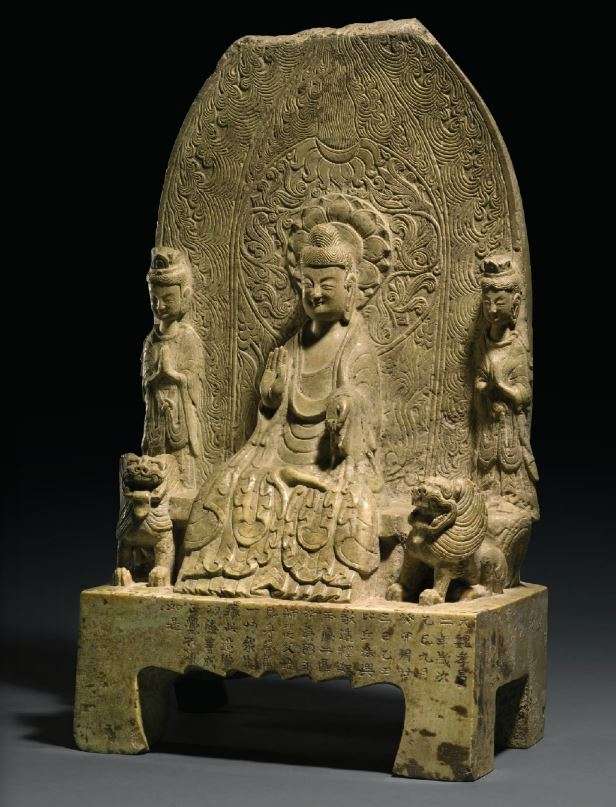
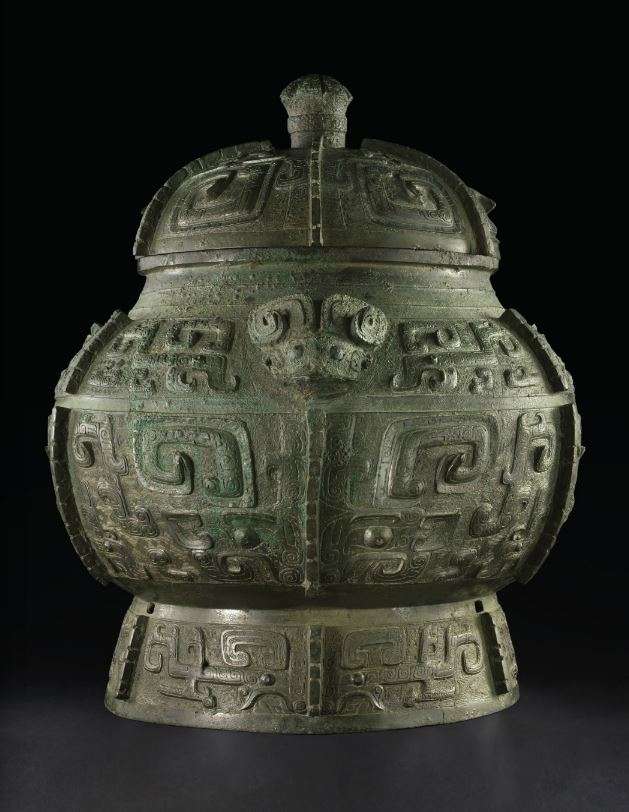
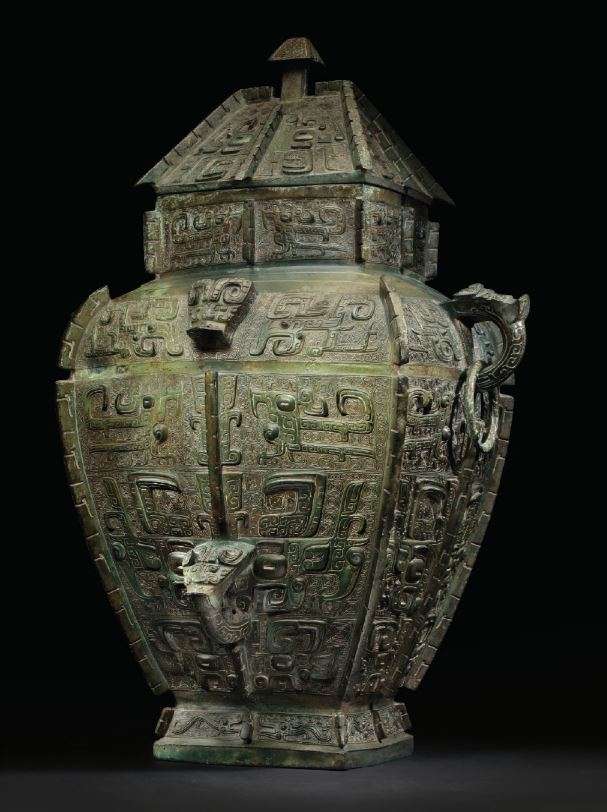
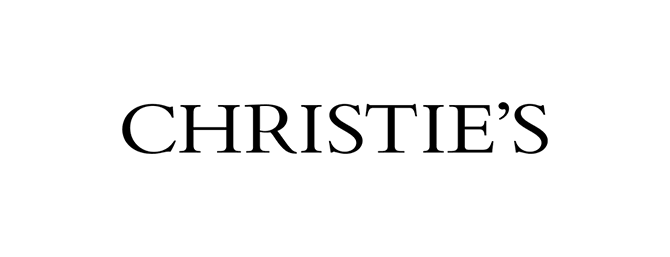

 The Catalogue, Click the image to open and vuew
The Catalogue, Click the image to open and vuew
Looking to get information on a Large Chinese Bronze artifact vase with lid